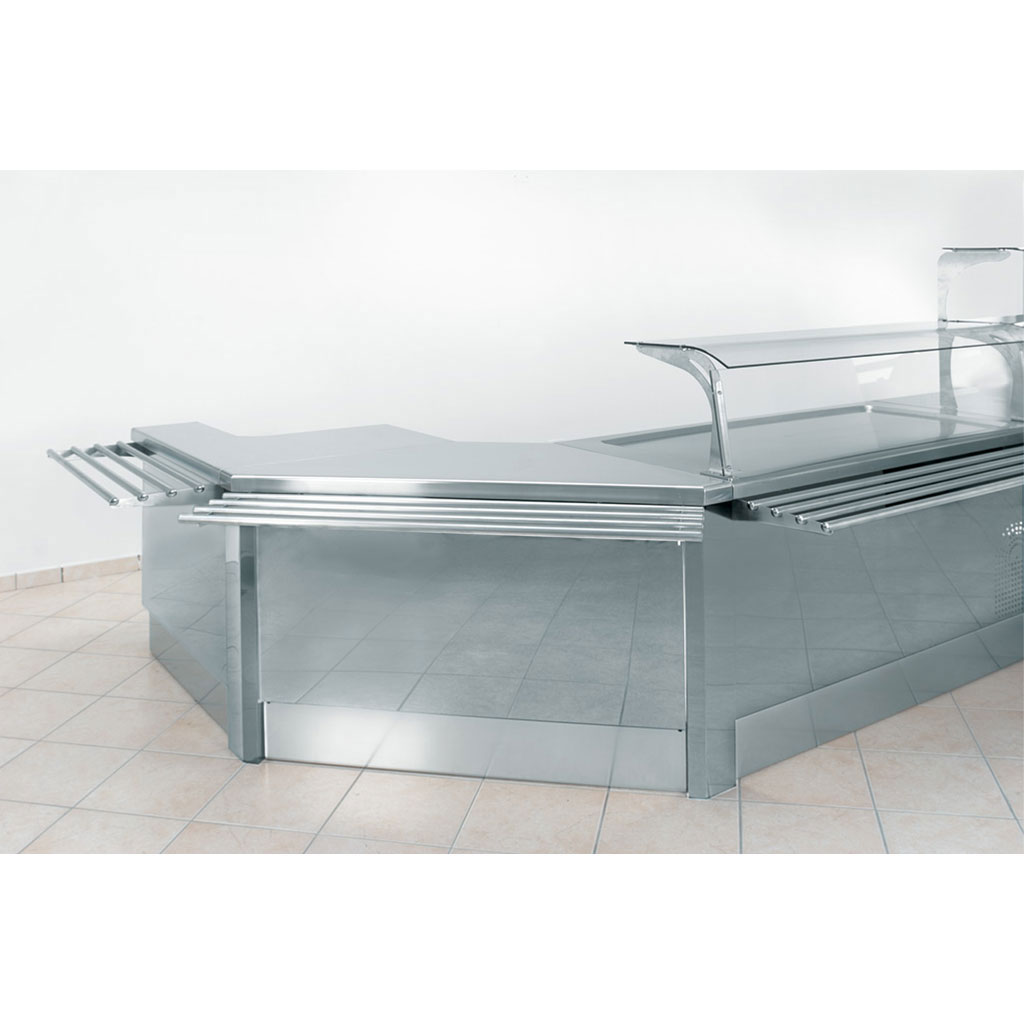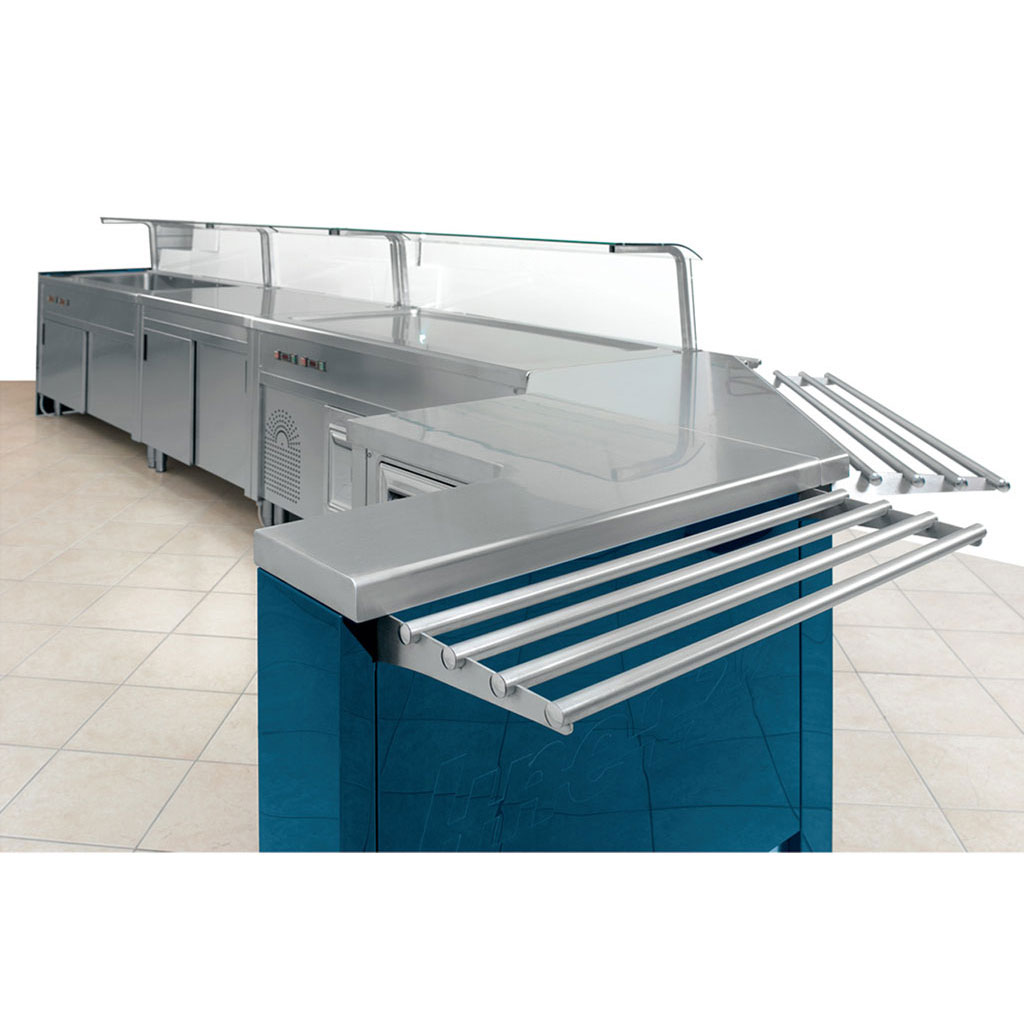
SELF-SERVICE
The daily routine of self-service workers (and patrons) is changing due to the new safety disposition and social distancing rules. But will that change the business for good? Uhm, unlikely I’d say.
Why unlikely? Because self-services have been around for ages. Literally.
Thermopolia, ever heard of ’em?
They were the fast foods of the classic world. Very popular in the whole territory of the Roman Empire, they probably were used even before in the Greek Cities (hence their Greek name, meaning “hot food shop”).
Those were consisting of a large countertop, usually positioned in a small room; sometimes though, said rooms were larger, probably containing tables and chairs for the customers. A sort of “Lounge room” ante-litteram.
The countertop had some earthenware vases embedded, called Dolia, used to store dried or cooked food.
Olives, pears, figs, nuts, lentils, and poultry (the red meat was kind of a luxury food at the time) were the best-sellers. And wine, of course.
The customers were mostly working-class lads. Only a circle of wealth people had kitchen in their own house (dedicating a room of the house to cooking was considered an extravagancy).
And, despite being a kind of hangout for the blue collars, a few historians actually wrote that nobles and aristocrats scorned Thermopolia publicly, but they didn’t dislike after all to stop by for some dried seafood, almonds or cheese with honey!

SELF-SERVICE COLD UNITS AND DROP-INS
How many stories can stay behind a dish?
Many, sometimes. Take Carpaccio, for instance.
Thin slices of raw meat or fish, served with a sauce (which can be made prevalently of oil or lemon juice), right?
The dish was named after a 15th-century Venetian painter Vittore Carpaccio, who used a characteristic tone of red in his artworks. And the colour of the fresh raw meat served so thinly sliced reminded the chef of that shade.
Who was the chef? Well, it was Giuseppe Cipriani, owner of the Harry’s Bar, who also invented the cocktail Bellini (2 parts of Prosecco, 1 part of peach purée).
Where this name comes from? Well, from yet another 15th-century Venetian artist, Giovanni Bellini, who used to paint the togas of the Saints and Holy Mary’s tunic with a shade of pink very similar to the cocktail’s colour.
Harry’s Bar, we said, right? That’s where Ernest Hemingway used to go every day during his long stays in Venice (“Papa” had his own table on a corner reserved for him).
He even dedicated to the bar a whole page of his novel Across the River and into the Trees.
So, the point is: Carpaccio can be served on self-service cold units by Inox Bim!

SELF-SERVICE HOT UNITS AND DROP-INS
There were mainly two ways of serving food in 19th century Europe: “Service à la française” and “à la russe”. The former, which had been in vogue in noble courts since the Middle Ages, involved the waiters presenting all the dishes to the diners, except for the dessert. It was up to the guests of the banquet to choose which dishes, and in what quantities, put on their plate.
The Russian style of service was instead different: the waiter brought the dish to the table, a single course, and a single portion, serving it directly to the guest. The latter way of serving was soon adopted by restaurants throughout the Western world (and much of the rest of the Countires).
The French service, on the other hand, has changed: it is no longer the waiter who brings all the dishes to the diners’ table, but these are now placed on a separate table, with the diners going there alone to serve you. And this type of service has taken the name of “buffet”: a name, in French precisely, which initially indicated the piece of furniture on which the plates and cutlery were placed.
And bear in mind: for your buffets, there are the hot units and drop-ins from the Inox Bim self-service!

ACCESSORIES
Who would have imagined it, but a diplomatic incident was triggered by a question of “cutlery”. Better to say, for the way of using them.
Montreal, Canada, 2006: 7-year-old little Luc Gallardo is the son of Filipino immigrants to Canada. He is a lively and intelligent child. And like any lively and intelligent child, he grows up by imitating his role models, in this case his parents.
Now, not many people know that Filipino etiquette requires that a spoon and fork be used at the table to eat at the same time. Pasta, rice, noodles etc are “pushed” into the mouth with both cutlery at the same time.
Well, the cafeteria monitor, Mrs. Bertrand, didn’t appreciate this cultural variant. On more than one occasion, she made Luc sit alone, saying that the child ate “like a pig” and “in a disgusting way”. In addition to having scolded the child for not having washed his hands, asking, obviously ironically, if in his country it was not customary to wash hands before sitting at the table.
The protests of the Filipino communities in Canada, together with those of the media in the homeland, were not long in coming. Protest sit-ins also took place outside the Canadian embassy in Manila.
The defence theory was that the child “filled his mouth with food” to make his classmates laugh, and was scolded (and name-called) for this very reason, and not for his use of cutlery. The court endorsed this thesis, condemning the cafeteria monitor only for the phrase “don’t people of your Country wash their hands before having lunch?”.
The Gallardos, however, appealed to the Quebec Court of Human Rights, obtaining a conviction from Mrs. Betrand, and from the school for objective responsibility in not favouring interculturalism.
Justice was done for little Luc. And so, we note that there are many ways to use cutlery.
But to store and display cutlery, especially in a cafeteria, there are the Inox Bim cutlery trays. In addition to other useful accessories!

 Italiano
Italiano
